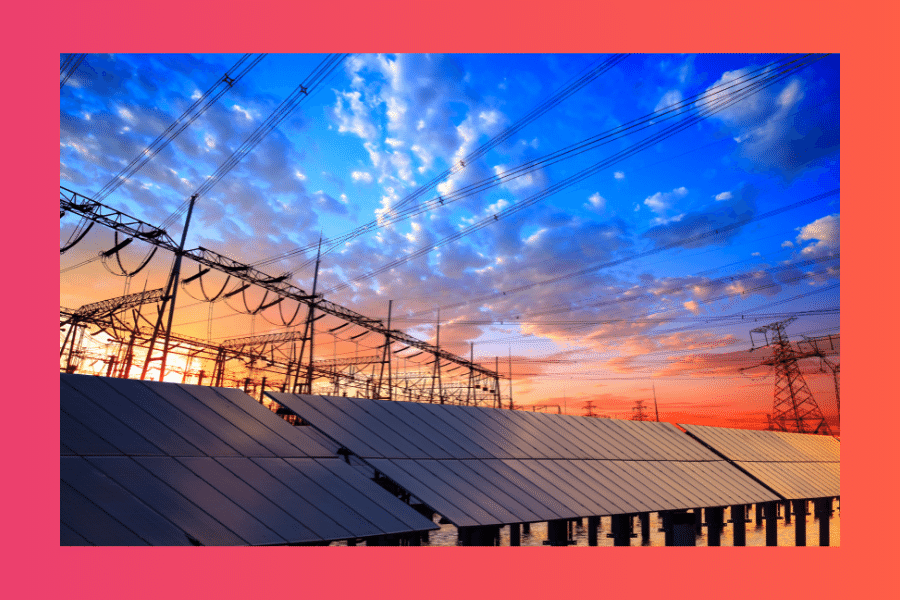Big Tech Companies Are Driving Renewable Investment
Google, Apple, Amazon, Microsoft, Facebook. What do all of these companies have in common? Of course, these are some of the most well-known...
5 min read
![]() Solar Trust Centre Team
:
Jun 11, 2016 1:11:39 AM
Solar Trust Centre Team
:
Jun 11, 2016 1:11:39 AM
As the old G.I. Joe cartoons always say at the end of each show, “knowing is half the battle”. Before you jump into anything, it’s always good to know what you’re going for, and have prior knowledge on what you’re getting into. This is the same when you’re investigating a switch to solar power. As a consumer, you need to understand how the system works. We’re not saying that you need to know all the technical terms and how complex the system works, but have at least a basic understanding how solar PVs work to prevent any confusions between you and the solar PV provider. It will help you ask the right questions and get the right answers whenever you decide to go solar.
Here are some of the top considerations when choosing a solar power system according to LG Energy
Whatever stage you’re checking solar, bringing down your energy consumption is the often the easiest and simplest way to start reducing your monthly bills and carbon emissions. There are many actions you can take to improve your energy consumption at home. Your priorities can include installing solar hot water, ensuring your home is properly insulated and using energy efficient appliances. The financial incentives commonly play a role in your decision to install solar power.
Consider your main goal in installing your solar power system. Is it reducing your electricity bills to zero? Or you want to offset your electricity use? Or you want a small budget system/ or a small system that can be expanded in the future? In general, you don’t need a system to supply all of your use, although you may wish to do so. If the electricity system does not cover what you need at any point in time, the traditional grid will take care of the deficiency. The limiting factors on your solar power choice may include your budget and the available roof space that is unshaded. You can discuss your options with your preferred installer and once you’ve made your decision, be clear with your installer about your energy goal.
The main components of the cost of a solar system include the solar panels/modules, the inverter, the installation cost, the tilt frame if needed and other miscellaneous. In general. A new meter will be required to be installed, but the type, the costs, and installation of this will depend on the electricity distribution provider. Most of the time, it will be an additional cost often not included in the cost of the system. The cost of the quotes will also differ depending on the components offered. It will depend on the different types of solar panels, the brands of solar panels and inverters. Also, be aware that the solar provider conducts site visits to quote and customise the system depending your circumstances or your solar requirements.
The best solar panels or solar modules will depend on your budget. That is if you want to buy a specific brand or an Australian made one, how large the modules will be, the type of site you have and if the place is shaded or not. Thin-fil panels are best for shaded areas and are cheaper but require more space. Mono-crystalline and polycrystalline panels require less space and more efficient but are not suited for shaded areas. Solar panels also come in different wattages and brands. The solar panels must comply with Australian Standards and the installer should make sure that only approved panels are offered and installed. Over time, solar panels lose some of their performance. The warranties reflect this with a 90% stated outputs over 10 years and 80% of state output for a period of 25 years.
Inverters will have different designs, features, and quality. Inverters monitor and optimise the system voltage to gain the most effective conversion of solar energy to electricity, convert the DC current to AC, inverters possess safety features to prevent any dangerous situation is some faults are detected and it monitors the performance of the system. Your chosen electrician should make sure that the inverter of your choice is included in the CEC list of approved inverters and meet the standards and requirements of the electricity distributor.
The installer should consult with you on how to optimise the site of the solar power system to maximise its benefits. The ideal spot for your solar power system is a north facing section of the roof without shade, but unfortunately, not everyone has such a spot. If you don’t have the sweet spot for your solar, you can opt for a tilt-frame to mount the panels to reorient them to face the right direction. If there’s any shade on your site, thin film panels are suited for the setup.
The solar installation company should optimise the overall design of the system to suit your needs. It is important for you to understand that the solar panels will never generate quite as much power as they are rated for. In the design process, allowances are made for any losses that can occur at each stage and variations due to external factors like temperature and climate. Australian Standards specify many of the requirement for safe design and operation of the system. It includes the correct types of cables and the wiring conventions, component placements and fuses.
The installer must be CEC accredited. Look for an installer that takes good care in suggesting a system for your needs. It’s suggested getting 2-3 quotes to make an informed decision. It’s also important for the installer to inspect your location before you commit to any installation. You also want your system to be suited to your location, what warranties are offered on the panels, inverter and the guarantees of the workmanship itself. See here for more tips on choosing a solar system.
Installation of renewable energy generation systems are helping the country in its move towards clean energy generation and thus, credits are given when a system is installed. This is achieved with a certificate that is created under the Federal Government’s Small-scale renewable Energy Scheme. The value of the certificates is determined by the market price that varies from $20 and $40 each. Your location will dictate the number of certificates generated and the system size in kilowatts. The rebate or discount that you will get will depend on whether you are eligible for solar credits. State governments have control on the minimum feed-in tariff that power retailers will pay the consumers for the power supply to the grid. It may be based on the gross or the total power your system makes or it can be the net energy after power you are consuming at the time of measurement.
The installation time for a solar installation will depend on your location and situation. The installer should be able to give you an estimation of the time it will take for your solar power investment to pay for itself. The calculation will account for the past energy use, the system cost, and the production capacity. It will also include the feed-in tariffs that will have an effect on the savings you make.
If your household is connected to the electricity grid, you can have a grid-connect system that will feed the solar-produced power into the grid when you’re not using it and will draw more power from the grid when you need it. But if the grid power fails, you can’t use the power generated from your roof without the grid. If you want to have backup power, you need to have a battery backup system. Tesla, LG, Samsung and Origin offer solar batteries and these setups will require a different system design, a regulator, and a specific inverter.
Click here for more details about solar power applications on LG Energy

Google, Apple, Amazon, Microsoft, Facebook. What do all of these companies have in common? Of course, these are some of the most well-known...
Google, Apple, Amazon, Microsoft, Facebook. What do all of these companies have in common? Of course, these are some of the most well-known...

1. What Actually Drives Down Solar Costs? While the fact recent years have seen a consistent downward trend surrounding the costs of solar is great,...